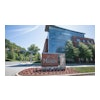As the GPA and SAT scores of incoming freshmen has risen, the percentage of Black students enrolled at Temple has declined. On the other hand, the retention and graduation rates of Black students are as high as ever. Has Temple really abandoned its mission?
PHILADELPHIA
Temple University’s eighth president, Dr. David Adamany, helped engineer a remarkable turnaround in the school’s reputation. The average SAT score of incoming students jumped nearly 70 points, from 1021 in 1998 to 1088 in 2006. Temple has renewed its focus on research, pulling in $80.2 million in research grants in 2006, a significant increase from the $62.6 million it received in 2001. An institution once known for its relaxed admissions policies has become increasingly selective, perhaps a necessity considering that applications from first-time freshmen have swelled more than 45 percent from 2000 to 2006.
But the institution with a long-held reputation as a gritty and tenacious college environment where talented city kids went to catch up academically with their suburban counterparts, is experiencing a decrease in its Black enrollment. In 1998, 20.8 percent of its students were Black, but by 2006, the percentage had fallen to 15 percent at a school once called “Diversity University.” Almost 32 percent of Temple’s 2006 freshman class were out-of-state students, up from 27 percent in 1998.
Because of Temple’s shift, Adamany, who retired last summer, faced much criticism during his six-year tenure, and students and faculty are still feeling the aftershocks. Critics argue that the institution has abandoned its original mission in favor of a better standing in the academic world, and now they wonder where new president Ann Weaver Hart intends to take the university.
Temple officials say the demographic shift has less to do with improving its rankings and more to do with Philadelphia’s urban appeal and the university’s improved reputation, which is drawing prospective students from across the country. They also say they recognize the decline of the Black student population and are working to reverse the trend.
There’s an enormous difference in the Temple I attended and the one where I work,” says Dr. Marc Lamont Hill, an assistant professor of urban education who earned his bachelor’s at the university in 2000.
“There was an explicit effort by the Adamany administration to recruit in areas other than Philadelphia,” he says. “There’s also been an ongoing conversation about changing standards and increasing the number of quality students that the university had. That type of conversation eventually leads to the exclusion of city kids and minority students.”
By “fetishizing” SAT scores and geographical location, he says, Temple may be leaving behind a number of capable students who simply don’t do as well on standardized tests.
“It’s tempting to believe that minority students aren’t the most talented students and that they need to work harder, but we know the measures used in higher education are faulty,” Hill says.
Adamany, who had been famously blunt about the issue in the past, argued that Temple’s retention rate was too low in the 1990s to let current standards remain.
“Can you turn the better-qualified students away so you can take the least qualified? That’s not a policy anybody endorses,” he told The Philadelphia Inquirer in 2003. “Even if we wanted to be what we once were, we couldn’t be that anymore.”
The school’s retention rate for Black students, which hovered around 65 percent in the mid-1990s, increased to as high as almost 80 percent in 2005. Graduation rates for Black students increased steadily: just 38.3 percent of the 1988 fall freshman class had graduated within six years, but 60.6 percent of the fall 2000 class graduated within six years.
The Rankings Quest
There’s been a growing trend on the part of public universities across the country to tighten their admissions requirements to attract higher-quality students. As many states begin to rethink their education funding budgets, the pressure on public universities to justify their budgets by attracting research grants and jobs has increased. Many schools that have historically been accessible to low-income students with average grades and test scores are now out of reach academically and financially.
The average GPA of an incoming freshman at the University of Florida, for example, is above a 4.0, which is only possible by receiving high marks in honors or Advanced Placement courses in high school. Higher education experts have chided public universities for improving their rankings by increasing financial aid for wealthy applicants to encourage them to enroll.
Currently, about 51 percent of Temple’s $54.6 million financial aid budget is awarded solely on financial need. About 75 percent of Temple undergrads receive aid packages, which average around $13,000, according to Temple officials.
“If you want to be competitive in U.S. News & World Reports’ college rankings, showing that your students have a higher average high school GPA is a good way to do it,” says Dr. Camille Z. Charles, a professor of sociology at the University of Pennsylvania. According to Charles, public universities have picked up on the correlation between better socioeconomic standing and higher grades. As a result, schools are admitting more middle- and upper-class students. “Obviously, it’s not the best thing to do in order to get academic money to the students who need it most. But the upper-middle-class kids are a better risk for an institution, academically speaking,” she says.
And this trend has not bypassed Temple.
“Temple is trying to become more competitive with higher-tier universities in general,” says Charles. “Philadelphia’s high schools are so bad, I imagine a smaller portion of working-class kids from the city are satisfying Temple’s standards.”
Megan Duncan, a recent Temple graduate and a former president of Temple’s chapter of the Progressive NAACP says, “People have mentioned their problems with the lack of diversity at Temple to the NAACP. But no one seems willing to mobilize.”
Duncan, who studied biochemistry, says Temple’s dwindling diversity should be a wakeup call to the administration, but she doesn’t expect much to be done.
Under New Management
Although Hart, formerly the president of the University of New Hampshire, declined to be interviewed for this article, a Temple spokesperson points to some of Hart’s past comments to illustrate her commitment to providing a quality public university education for all. In an interview with the Associated Press, Hart said diversity is “a blessing,” and that an ethnically varied student body is part of Temple’s “signature.”
Mark Eyerly, Temple’s chief communications officer, notes that Temple is among the top schools granting bachelor’s degrees to African-Americans. Temple ranked sixth in Diverse’s 2007 Top 100 Undergraduate edition. Eyerly adds that the school hired Rhonda Brown as its first associate vice president for multicultural affairs, a position designed to “lead efforts to improve the Temple experience for minority students, increase minority hiring and find opportunities for minority-owned businesses.”
“Temple has always been inclusive and directed toward creating greater access to the academy,” says Brown, adding that Temple’s recruitment of minority students is more aggressive than ever. “We pledge not only to incorporate diversity into all facets of our community, but also to develop and sustain academic dialogue and discourse on the significance of diversity and multiculturalism in higher education.”
According to university documents, the aggressive recruiting of minority students, and specifically students in the Philadelphia School District, remains one of the admissions office’s explicit goals. Recruitment tables are set up at 90 percent of Philadelphia’s public high schools, and according to Eyerly, the best and brightest minority students up and down the East Coast are identified and sent no-fee applications each year.
Though these practices sound encouraging, some in the TemplePhiladelphia’s urban minority working class? community are still taking a wait-and-see approach to Hart’s administration. Will she follow in Adamany’s footsteps, or steer the school back towards its original mission of providing a quality education for
“Without a doubt, the big question facing Temple right now is, ‘What will Ann Weaver Hart do?’” says Hill. “From what I see so far, the new administration has a commitment to changing the current character of Temple in a real way. But I’m not willing to just concede the fact that it’s actually going to happen.”
– Mike Benner
There are currently 0 comments on this story.
Click here to post a comment.
© Copyright 2005 by DiverseEducation.com


















